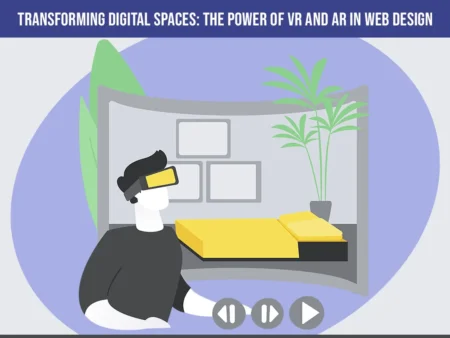
In today’s digital transformation era, virtual and augmented reality has opened up new possibilities for immersive customer experiences. Virtual tours, leveraging these technologies, have become a significant tool for businesses aiming to captivate and engage their audience more profoundly. As we navigate through the implications of VR and AR in the digital landscape, it becomes evident that integrating virtual tours through strategic web design is not just an option but a necessity for enhancing the online customer experience. This article delves into how businesses can harness the power of web design to incorporate virtual tours effectively, thereby transforming the way customers interact with brands online.
The Rise of Virtual Tours in the Digital Age
Virtual tours have transcended their initial novelty to become a critical component of the digital strategy for various sectors, including real estate, travel, education, and retail. These immersive experiences offer a digital journey through physical spaces or scenarios, allowing users to explore and interact with environments from the comfort of their homes. The surge in VR and AR technologies has made these tours more accessible and realistic, providing a unique opportunity for businesses to showcase their offerings in a compelling way.
The Importance of Web Design in Integrating Virtual Tours
Web design plays a pivotal role in the successful integration of virtual tours into a business’s online presence. A well-designed website acts as the gateway to these immersive experiences, ensuring they are easily accessible, engaging, and seamlessly integrated with the brand’s digital ecosystem. Effective web design considers user experience (UX) at its core, ensuring that virtual tours are not just an add-on but an integral part of the customer’s journey.
User Interface (UI) Considerations
The user interface is the first point of interaction between the customer and the virtual tour. A clean, intuitive UI design is essential for encouraging users to engage with the tour. This involves thoughtful placement of tour links or buttons, clear instructions on how to navigate the tour, and ensuring compatibility across all devices and screen sizes. The goal is to minimize friction and make the transition into the virtual tour as smooth as possible.
Loading Times and Performance
Virtual tours, with their rich media content, can be resource-intensive. Optimizing the performance of your website to accommodate these tours without compromising on loading times is crucial. This may involve using advanced web technologies like progressive web apps (PWAs), lazy loading for heavy assets, and optimizing image and video files for the web. A performant website ensures that users can enjoy the virtual tour without any technical hindrances, enhancing their overall experience.
Accessibility and Inclusivity
Integrating virtual tours into your website offers a unique opportunity to improve accessibility. By adhering to web accessibility standards, you can ensure that these immersive experiences are available to a wider audience, including those with disabilities. This includes providing alternative text for images, ensuring keyboard navigation is possible, and offering voice commands for navigating the tour. An accessible virtual tour not only broadens your audience reach but also demonstrates your brand’s commitment to inclusivity.
Leveraging AR and VR for Enhanced Interactivity
The integration of AR and VR technologies can take virtual tours to the next level of interactivity and immersion. For instance, retail businesses can use AR to allow customers to visualize products in their own space, while museums can create VR tours that transport users to different eras. The key is to leverage these technologies in ways that enrich the user’s experience and provide value that goes beyond what’s possible through traditional web content.
Case Studies: Successful Integration of Virtual Tours
Many businesses have already seen significant benefits from integrating virtual tours into their web design. Real estate websites offering 360° views of properties have reported increased engagement and higher conversion rates. Universities using virtual campus tours have attracted more prospective students by providing them with a feel for campus life. These success stories highlight the potential of virtual tours to enhance the online customer experience when thoughtfully integrated into web design.
Elevating Experiences with IB Systems USA
In the digital era, the key to unlocking unparalleled customer engagement lies in the strategic integration of virtual tours with superior web design and innovative marketing strategies. This is where IB Systems USA excels, offering a synergy of web design excellence and cutting-edge marketing solutions that breathe life into virtual tours. Our commitment to creating immersive, interactive experiences is matched by our dedication to enhancing your online presence through sophisticated web design and targeted marketing campaigns.
At IB Systems USA, we understand that a compelling online experience goes beyond the visual appeal; it’s about building a connection with your audience. Through our expertise in web design and marketing, we ensure your virtual tours not only captivate but also convert, driving engagement and fostering meaningful interactions. Whether you’re looking to showcase your offerings or tell your brand’s story, our team is equipped to elevate your online strategy, making every click a journey toward deeper customer engagement.
Picture Credit: Freepik
